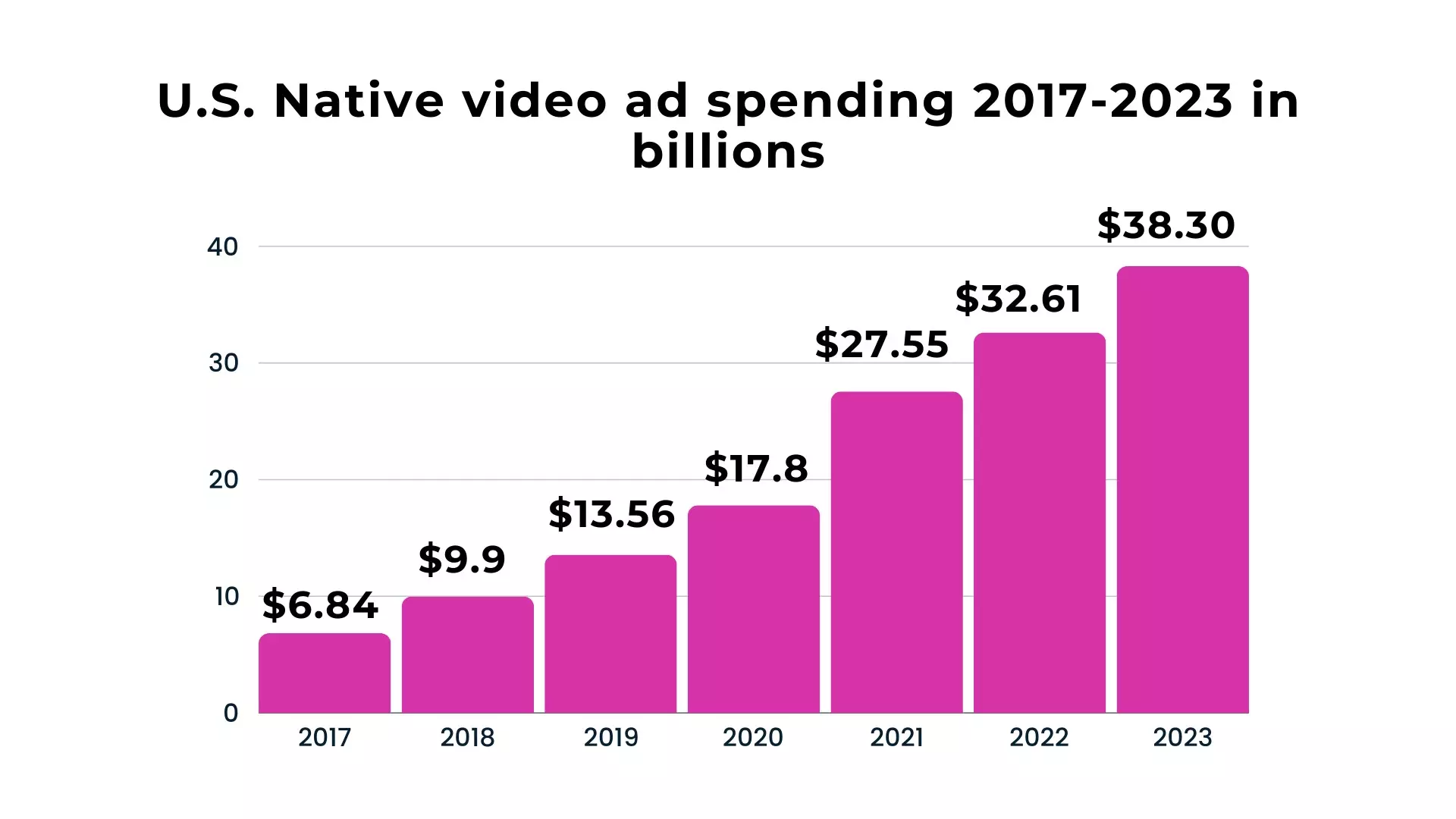Video ads are an undeniable choice for attention and engagement. The video ad spend and video ad revenue forecast reflect that well: $59 billion was spent on video ads in 2023, and the online ad revenue is forecasted to reach $362 billion in 2027.
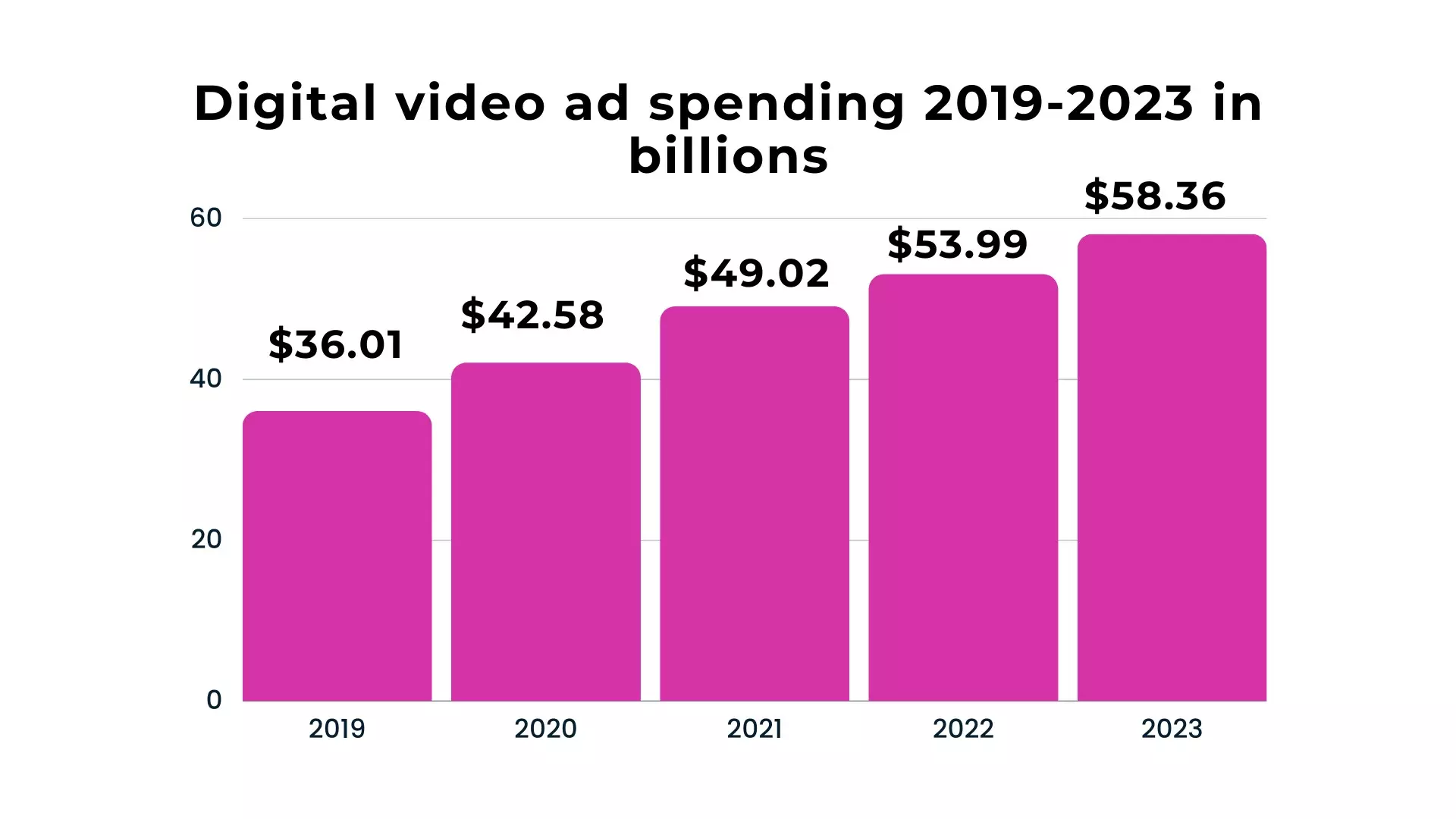
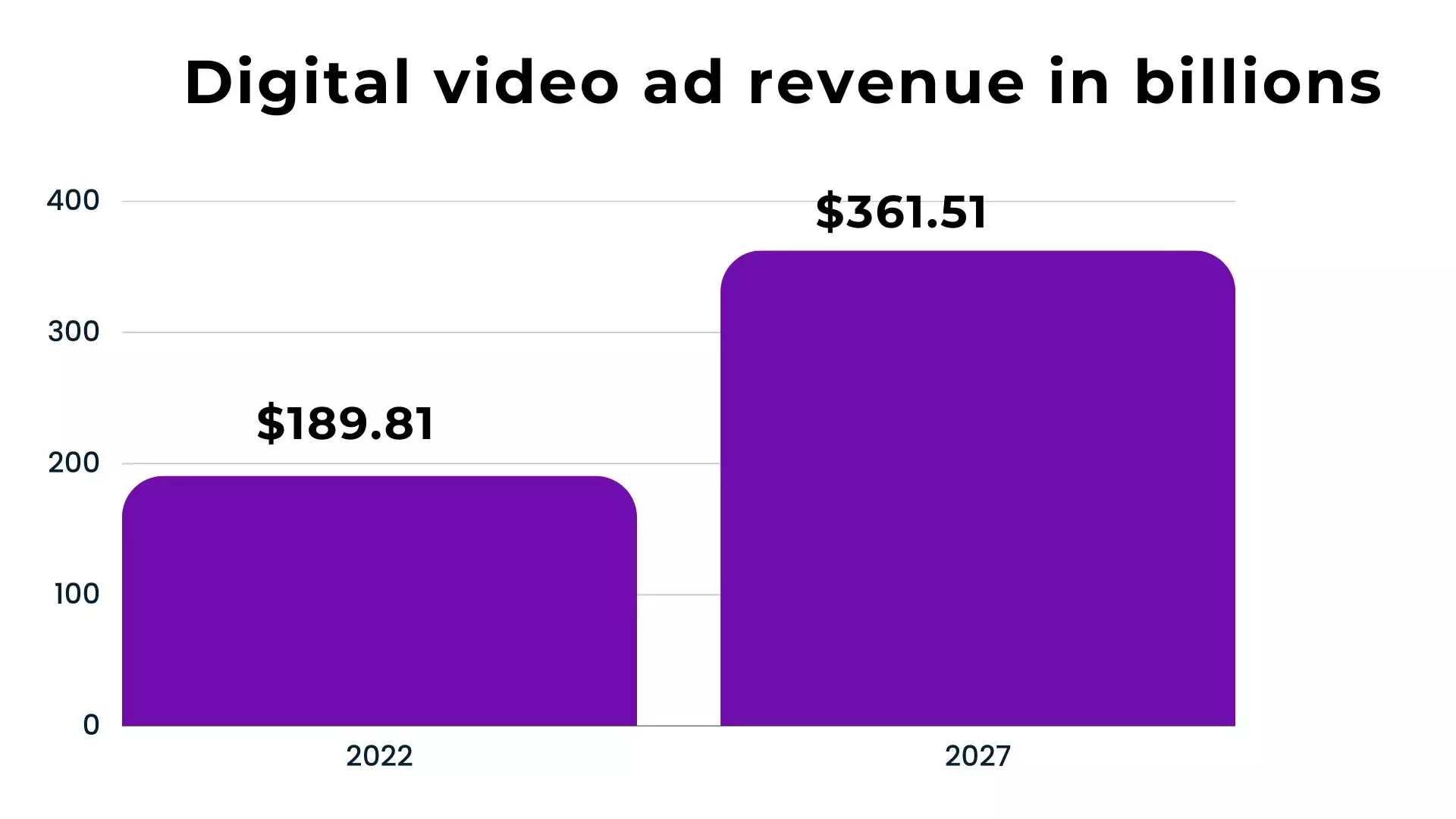
That is why it is wrong for a publisher not to have a video ad slot in the era where 91% of consumers prefer video content. To make the most out of video ads, one should know the type of video ads because they greatly impact revenue and demand. The video types are also known as video ad formats.
So, to get you started, this article will directly highlight different types of video ads, best practices, and the importance of using different ad formats. Video ads are the best source of revenue, and you should keep it flowing with practical tips and recommendations in this blog.
Table of Contents
What Is Video Advertising?
Video ads are the most engaging ads that deliver a short brand message across the audience. Since video ads are highly efficient, their CPM value is high and has more demand. Publishers can sell video ad spaces by any programmatic means or direct deals.
You can serve video ads through different mediums, which include:
- Webpage (Desktop and mobile)
- Social Media (Facebook, Instagram, LinkedIn, Twitter, etc.)
- Video platform (YouTube and Dailymotion)
- Over-the-top advertising (OTT)(Netflix, Hulu, and Amazon)
- Connected TV (CTV)
Types of Video Ads
There are many types of video ads, i.e., ad formats in adtech to appeal to different users. A few of the vital types of video ad formats are covered here.
1. Linear video ads
Linear video ads are the most common type that plays before, during, or after the main video content. They are often skippable, allowing viewers to skip the ad after a few seconds. This kind of ad will cover the full screen and create a lasting impression on the audience, through which you can increase your ad viewability rate.
The linear video ads have further formats like in-stream and bumper ads.
In-stream video ads immerse viewers within the content they’re consuming. They play before, during, or after video content. These ads are categorized into:
- Pre-roll ads: These ads appear before the main video content and typically last a few seconds. They are non-skippable and are an effective way to capture viewers’ attention right from the start.
- Mid-roll ads: The ads inserted in the middle of the video content are called mid-roll ads, and they interrupt the viewing experience. Although they may be disruptive, they have higher viewership rates as users get attracted by the ad and continue to watch despite the skip option with the video.
- Post-roll ads: These ads appear at the end of the video content. Viewers can skip them, but if they are engaging and relevant, they can still leave a lasting impression.
Bumper ads:
Bumper ads are short-form video ads that are typically six seconds long and non-skippable. Given their short duration and non-skippable nature, bumper ads capture viewers’ attention and increase the viewability rate and ROI. It can be somewhat intrusive to the content the users are watching.
The other two different types of linear ads are skippable and non-skippable ads. Users can choose to skip the skippable ads, and they cannot skip non-skippable ads as they are made to play from six to ten seconds to give a non-intrusive user experience.
2. Non-linear video ads
Non-linear video ads appear as overlays or banners on the main video content. They do not interrupt the viewing experience and typically stay on the screen for a designated duration. This ad format provides a non-disruptive way to engage viewers while watching their chosen video.
A few non-linear video types include:
- Out-stream video ads
Out-stream video ads are not tied to video content and can be displayed on various non-video platforms, such as articles or social media feeds.
Out-stream ads autoplay when they come into view and pause if the user scrolls past them. These ads usually accompany text or images and can be customized to blend seamlessly with the platform’s content.
They are highly versatile, non-intrusive, and can be programmed to stick to the screen when a user scrolls. Out-stream video ads give a meaningful interaction with targets.
- Overlay & Non-Overlay Ads
Overlay and non-overlay ads are great video formats for delivering content within a webpage or application.
Overlay ads:
The ads that play on top of video content are typically in the lower third of the screen. It stays without disturbing the video running in the background. These ads are static, like traditional ads, and are less intrusive. Users can choose to see the ads or click on the close button.
Non-overlay ads:
Non-overlay ads are incorporated seamlessly into the video content without obstructing the viewer’s experience. They blend seamlessly within the video, ensuring a seamless viewing experience and increased viewability rate.
3. Companion ads
Companion video ads are usually displayed alongside the main video content, such as banners or text ads. They can appear above, below, or on the sides of the video player. This ad comes in many sizes and shapes, holding text, images, or rich media content around the video experience.
These ads give companionship to the main instream or outstream ads and offer additional information about the main ad.
4. Native video ads
Native video ads match the look and feel of the webpage content and integrate seamlessly. It is a less intrusive advertisement that ensures an uninterrupted user’s browsing experience.
Native video ads cover a broader range, from in-stream ads, out-stream ads, and in-article ads to social media ads. The ad spend on native video ads is increasing YOY in the U.S. for its high engagement and viewability rate.
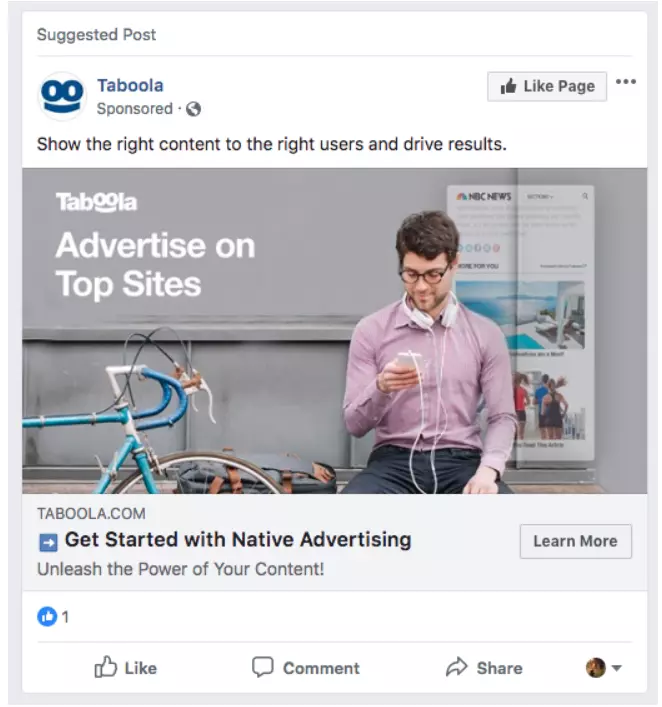
5. Masthead ads
Masthead ads are prominent video ads displayed at the top of a website or app for maximum visibility. They are usually large, full-width video ads that play automatically when the page or app starts running. They effectively capture viewers’ attention and leave a lasting impression.
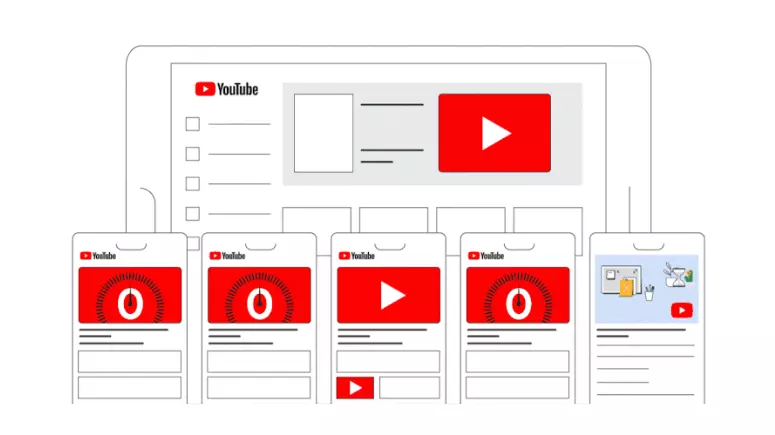
The masthead ad slot has a high fixed CPM price, which may vary according to the market. Buyers can target only one market at a time. It has a higher viewability and conversion rate.
6. Interactive video ad
Instead of putting your video ad slot that puts the viewers on a linear journey with skip, pause, or play options, implementing interactive elements gets higher engagement, viewability, and CPM rates.
Interactive ads are beyond the typical ad format and enhance two-way communication where users interact with your website ads. The best example of such a video is the “Will you fit into Deloitte?” recruitment ad.
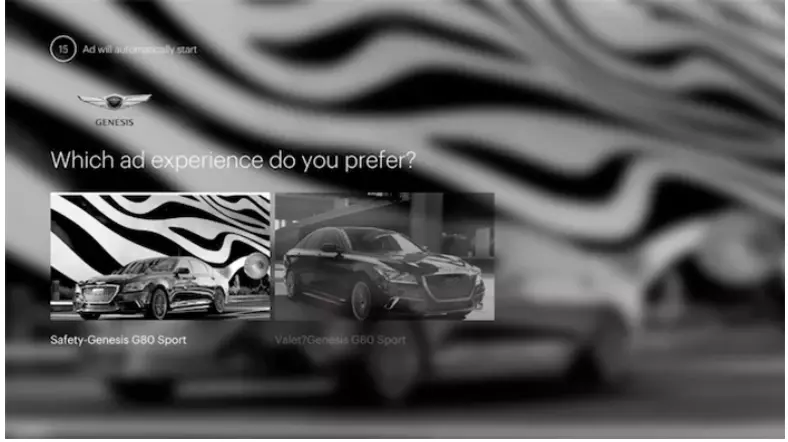
Here is another interactive video ad where a car ad asks the user which car ad they prefer to see.
This type of ad gives you valuable insight into the user and conveys more information quickly, which will get you and your buyer more conversions.
7. Over-the-top ads
Over-the-top (OTT) ads refer to video ads delivered through streaming services, like Hulu, Netflix, or Amazon Prime, bypassing traditional television platforms. These ads provide a unique platform for targeted advertising.
Here is an example of a video ad on OTT Hulu.
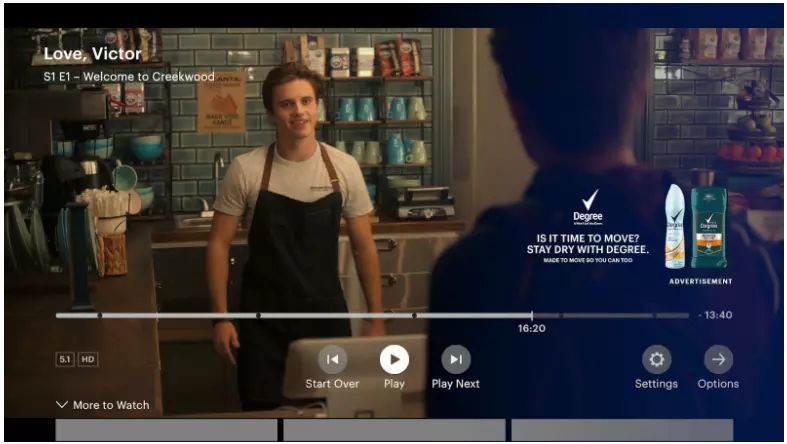
Best Practices for Video Ads
As more and more businesses shift their advertising efforts to the digital realm, video ads have become a lucrative choice for publishers. Following best practices to make a website with valuable users and reliable first-party data is important to increase the demand for your video ad slot.
A few of the proven practices are covered here:
- Optimize ad placement: Proper ad placement is critical to ensure that video ads receive maximum visibility and engagement. You should strategically position video ads that enhance UX. Placing ads at natural breakpoints between content or at the end of articles can capture the audience’s attention.
- Optimal ad length: the length of the video ad plays a crucial role in retrieving the users, and it should be optimized to get high CPM, CTR, and CPAs for your video. The optimal length of a video ad is 30 seconds, with an ad recall rate of 83%. The video ad slot with a high ad recall rate attracts more demand.
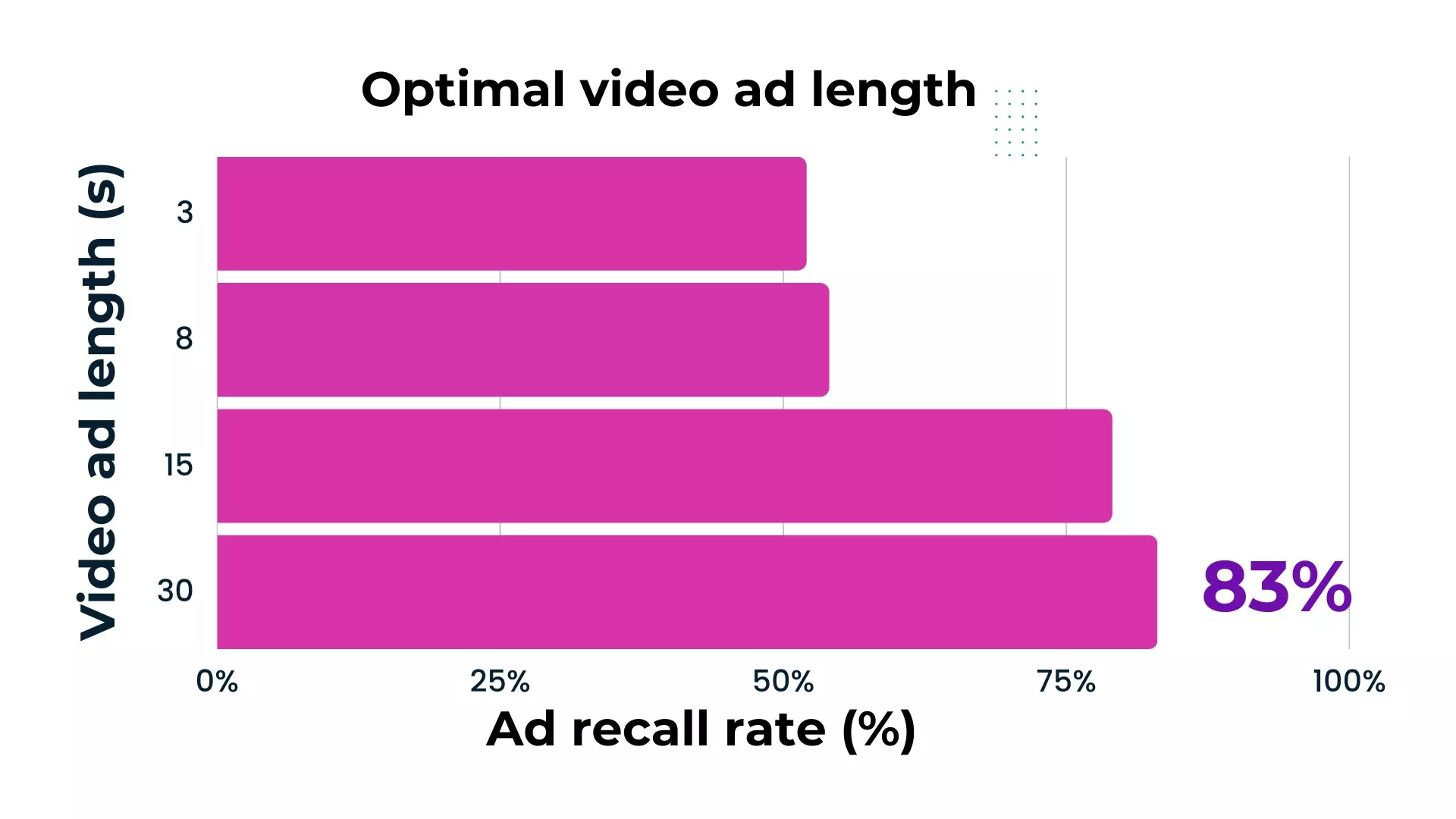
- Focus on quality video ads: High-quality video is essential to captivate the audience as it helps increase CPM significantly. So, you must have a connection with the best ad networks. The most important thing is the video player. You should choose a high-quality video player with the best navigational options and support various video tags such as VAST and VPAID.
- Optimizing video ad formats: You must choose the video ad formats to align with the interests and preferences of your audience. Shorter formats for mobile users and longer ones for desktop viewers are considerations. Still, relevance is truly achieved by understanding and catering to the unique expectations of the audience and the buyers.
- No auto-plays: Please ensure that the auto-play video ads on the website are on mute by default. Users strongly dislike auto-play video ads that involuntarily play sound. Such intrusive ads often drive users to install ad blockers, and in the worst-case scenario, they may even discontinue visiting your website.
Therefore, ensuring that the auto-play video ads are muted and accompanied by clear ON/OFF buttons is crucial for users’ convenience.
Suggested reading: A Guide on Video Ad Monetization.
Why Is Using Different Video Ad Formats Essential?
Publishers should not restrict themselves to offering one video format because implementing different video ad formats lets them realize the following benefits.
The trade-off between the video slots count and investment cost: You cannot display more video ads on one page. It is not advisable and will not improve your revenue metric. You will display either one or two on a page, considering the UX and reliability of the site.
The cost of implementing a video slot is high, and you can place either one or two, which means you have to make the most out of your one video slot to see profit. For that, using one ad format is not enough.
To appeal to demand partners: You must change and offer different ad formats to satisfy buyer requirements. Buyers require different ad formats to convey brand messages, such as awareness and conversion. So, if you change ad formats, you will get to cover a broader demand.
Improves user engagement: Nowadays, people see conventional video ads everywhere. So, using different ad formats with rich media and interactive elements improves the viewing experience and attracts their attention.
Higher fill rate and ad revenue: As I said before, the different ad formats will appeal to buyers and users. So, you will have a higher fill rate for your video slots and, thereby, higher ad revenue.
Technologies in Video Ad Serving
Thus far, we have seen ad formats. Now, let us know the technologies in ad serving so that you can understand the process of serving video ads in the next section.
Video ad networks: the network that brings collective demand for publishers. They help set up ad campaigns, video ads, reporting, and more.
Video ad server: The platform that is used in ad serving. It helps serve the highest bid ads on websites, trafficking, and reporting. It takes all the burden of sending ad requests to receiving and serving video ads on the website to give better UX.
Video player: The player communicates the path between video content and the user. Selecting the right video player is important in effective video ad serving. Third-party players like Brightcove, JW Player, etc, can be used.
Related reading: Best Third-party Video Players
Video tags: Video ad tags are important in serving video ads as they instruct ads on how to be played on a video player. It connects the video player with the video ad unit. VPAID and VAST tags are two popular tags launched by IAB.
How Is the Video Ad Served?
The difference between video ad serving and display ad serving is video player. The rest are almost the same.
- When a user enters a website with a video player and video ad unit, the player sends the request to the publisher’s server to retrieve the video content.
- The server sends the requested code with instructions on the location of the video and how to play it in the browser.
- The player must support video ad tags like VAST and HTML5 to run video content and ads.
- After receiving the main video content, the player requests the publisher’s server for video ad content.
- The publisher’s server will then fetch the highest video bid selected with programmatic means and return the ad markup to the player.
- After a player receives the ad markup, it sends a request to the advertiser’s server to make a note of the impression and send the ad retrieval link.
- The website runs the video ad once the advertiser returns an ad link.
It is a bit of a complicated process. But the publisher has to ensure they have a good video player with appropriate ad tags and are connected with the best adtech partner.
Embrace Video Ads: The Futuristic Marketing Tactic!
Video ad formats(Types of video ads) have transformed the adtech landscape, offering publishers a lucrative way to attract more buyers. So, if you want to get started with video ads, you should contact Automatad.
Automatad combines human intelligence with AI and Machine Learning to bring you the best of ad tech solutions and services. Even if the video ad is something you have never tried, the platform is all set to get you started. Right from video content to the best video ad demand partners, they have everything you need.
To add a feather to your hat, they introduce you to more effective programmatic media buying methods to get high demand, fill rate, and CPM for your video slot. So, if you are interested, feel free to contact.



